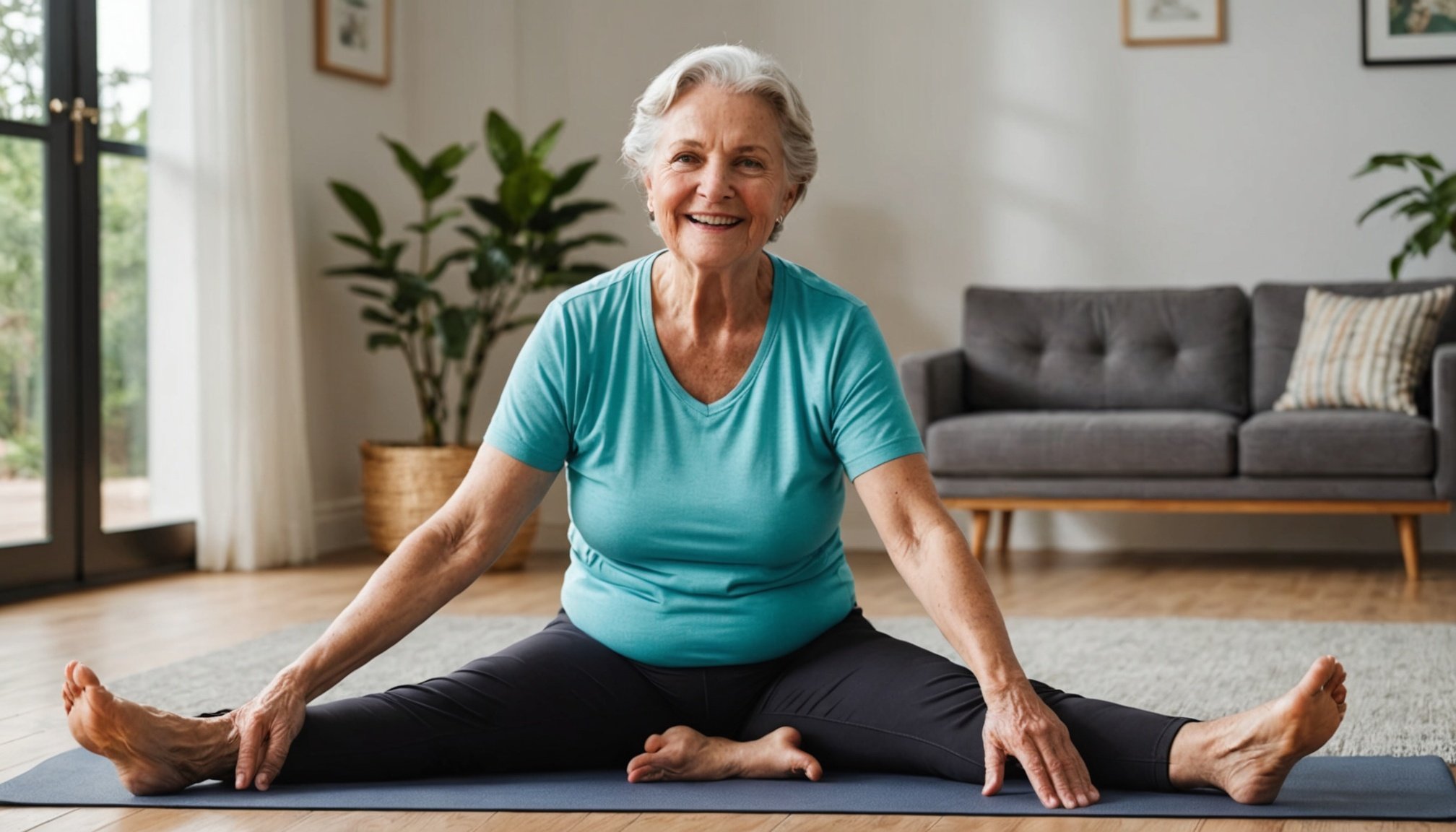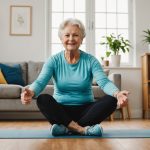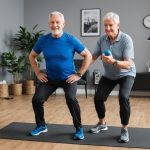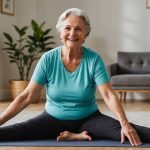Benefits of Gentle Stretching for Seniors
Gentle stretching offers numerous benefits for seniors, contributing significantly to their physical well-being. As the body ages, maintaining flexibility becomes increasingly important. Flexibility helps prevent injuries, enhancing mobility and balance, which are essential for everyday activities. This is why incorporating regular stretching into daily routines can be vital for seniors.
Physical Benefits: Stretching regularly can lead to improved blood circulation, increased joint range of motion, and reduced muscle stiffness. These benefits collectively enhance overall physical well-being, enabling seniors to perform day-to-day tasks with ease.
Topic to read : Empowering Seniors: Harnessing Guided Meditation for Effective Anxiety Relief
Mental Health Benefits: In addition to physical rewards, stretching has mental health benefits. It releases tension, lowers stress levels, and promotes relaxation. A routine incorporating stretching can increase overall mental clarity and emotional stability, paving the way for a more balanced lifestyle.
Incorporating Stretching: It’s recommended that seniors integrate stretches into their daily routines. Gentle, consistent movements tailored to their comfort levels ensure both safety and effectiveness. Whether it’s starting the day with simple exercises or ending it with calming stretches, the key is regularity.
In parallel : Boosting Muscle Strength: A Senior”s Guide to Effective Resistance Band Workouts
By prioritising stretching, seniors can significantly improve their physical well-being and enjoy a healthier, more active lifestyle.
Essential Gentle Stretching Techniques
When prioritising flexibility routines, particularly for seniors, it’s important to focus on gentle stretching techniques. These exercises are designed to improve mobility, balance, and overall health.
Neck and Shoulder Stretches
Enhancing upper body flexibility starts with the neck and shoulders. Gentle neck tilts and rotations can ease tension and promote relaxation. To execute these, slowly tilt your head from side to side and rotate it in a circular motion. It’s essential to maintain fluid movements to prevent strain.
Next, incorporate shoulder rolls and stretches; these can be performed whether seated or standing. Gently roll your shoulders in a backward circular motion, feeling a release in the shoulder blades. These movements help improve posture and alleviate stiffness, key components of effective senior exercises.
Strengthening these areas leads to reduced pain and increased range of motion, boosting upper body flexibility. By regularly practising these techniques, seniors can maintain a higher quality of life, making daily activities more manageable. Incorporating them into a daily routine encourages long-term health benefits. Engaging in these activities can significantly enhance overall well-being, enabling one to embrace an active lifestyle.
Safety Tips for Stretching
Incorporating stretching safety into your routine is crucial, especially for seniors. Begin with a warm-up to prepare your body, reduce stiffness, and increase circulation. A gentle stroll or a few minutes of low-intensity activity can effectively ease your body into a stretching session.
Recognizing your personal limits is vital. Stretching should never involve pain. Instead, aim for a gentle tension in the muscles. If pain occurs, it is a signal that you are pushing too far. Stretching is about maintaining flexibility and avoiding fatigue or discomfort. Listen to your body and adjust the intensity accordingly.
For those with existing medical conditions, approach stretching with caution. Consult a healthcare professional to tailor a suitable stretching routine. Certain movements could exacerbate medical issues rather than aid recovery or prevention.
Here are some precautions for seniors to ensure safe stretching:
- Keep movements slow and controlled to avoid strains.
- Adhere to a routine that factors in individual health constraints.
- Monitor your stretching environment for potential hazards such as slippery floors.
Adhering to these precautions can significantly enhance your injury prevention efforts, promoting a safer and more effective stretching experience.
Step-by-Step Stretching Instructions
Incorporating stretching into daily routines enhances senior fitness by boosting flexibility and preventing injuries. For those new to this practice, understanding effective stretching instructions is crucial.
Detailed Instructions for Each Stretch
When establishing a stretching regimen, start by identifying stretches suitable for your abilities. Begin with these fundamental stretches:
-
Neck Stretch: Gently tilt your head toward one shoulder. Hold for 10-15 seconds. This diminishes neck tension and improves flexibility.
-
Shoulder Circles: Rotate shoulders forward and backward. Do 10 repetitions for each direction to enhance mobility in the neck and shoulders.
-
Hamstring Stretch: While seated, extend one leg and reach toward your toes. Maintain for 15-20 seconds, alternating legs.
For optimal benefits, repeat each stretch at least three times weekly. Adjustments can accommodate various fitness levels, such as decreasing stretch duration if new to exercising or experiencing discomfort.
Visual Aids and Resources
Visual resources play a significant role in learning how-to stretches accurately. Look for instructional videos online or printable stretching guides to ensure the correct form. Visual aids offer reassurance in replicating stretches effectively, vital for maintaining motivation and progress. This visual support is essential for understanding and executing each technique properly, helping to develop a safe and reliable stretching practice.
Additional Resources for Seniors
Navigating the world of fitness can be challenging, especially for seniors. Thankfully, there are myriad senior fitness resources designed to provide support and guidance. Organizations like the National Institute on Aging or SilverSneakers offer comprehensive materials and programs. Their expert advice spans topics from basic exercises to advanced fitness routines, catering to all levels.
Local Exercise Classes
Participating in local exercise classes tailored for seniors can be a game-changer. These classes are often led by instructors trained to address the unique needs of the elderly, ensuring exercises are both safe and effective. Popular options include yoga, tai chi, and water aerobics, all designed to improve balance, strength, and flexibility.
Community Engagement
Community support is invaluable for maintaining motivation. Engaging with a local community can provide essential encouragement. Seniors who join groups often find that shared goals and experiences foster a sense of camaraderie, making the journey more enjoyable. Moreover, community environments extend beyond fitness, contributing immensely to emotional and social well-being, hence enhancing overall life satisfaction.
Access these valuable resources and immerse yourself in a supportive network. Whether through online platforms or local communities, embracing these options will significantly enrich the fitness journey.











